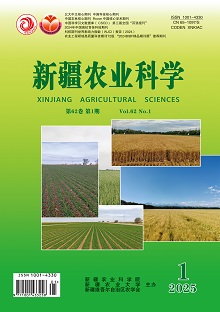【Objective】 This project aims to provide scientific theoretical basis for the selection and breeding of rapeseed in Taer Basin and promotes the breeding of high quality spring rapeseed varieties in the area. 【Methods】 The comprehensive evaluation of rapeseed varieties was studied by prioritization, principal component analysis and cluster analysis of 11 main traits by taking 15 rapeseed varieties as the test material. 【Results】 There were significant differences in the trait indexes of different rapeseed cultivars, the coefficient of variation was between 7.43%-29.21%, the greater the coefficient of variation, the greater the difference, and it had a certain degree of breadth and representativeness. The correlation coefficients of rapeseed variety 11 traits on yield were 0.44*, 0.36*, 0.34*, 0.24, 0.18 and 0.16, respectively, indicating that more attention should be paid to increasing the yield of the whole single plant, the number of horn fruits of the whole plant and the number of primary branches, and reducing the height of branches. Principal component analysis showed that the principal component characteristic values of the top 4 exceeded 1, and the cumulative contribution rate reached 78.472%. The varieties were ranked and classified by comprehensive scoring values combined with cluster analysis: the weighted sum of variance contribution rates corresponding to the four principal components was synthesized: F=0.448,3F1+0.267,1F2+1,568F3+1,279F4. The variety with the No. 1 comprehensive score was YC6 (Xinyou No. 17), with a score of 306.63 points, indicating that its 11 personality traits index had the best comprehensive performance, indicating that among the 15 varieties tested, YC6 (Xinyou No. 17) had the strongest ability to adapt to the Taer Basin; when the European distance was 5, the 15 varieties could be clustered into 4 major groups; the first group included 4 varieties such as YC2 and YC3, with the lowest average yield of 3,433.15 kg/hm2, belonging to the low-yield group; The second group included five varieties, including YC5 and YC6, with the highest average yield, 3,669.22 kg/hm2, belonging to the medium and high-yield group; The third group included five varieties, such as YC12 and YC13, with low yields, with an average of 3,522.60 kg/hm2, belonging to the low- and medium-yield group. YC15was the fourth category, with a higher yield, 3,891.90 kg/hm2, (which was a high-yielding variety). 【Conclusion】 Comprehensive principal component analysis and cluster analysis, more attention should be paid to increasing the yield of the whole single plant, the number of horn fruits and the number of primary branches, reducing the branch height, and comprehensively considering the good number of primary branches, stem thickness and main order angle fruits. Combined with the comprehensive evaluation value of principal components and cluster analysis, the trait indicators of group 2 and group 4 are above the middle level, among which YC6 (Xinyou No. 17), YC8 (CFZqt221060) and YC15(CFZqt221067) perform the best, which are high-yield rapeseed varieties suitable for cultivation in the Taer Basin.

